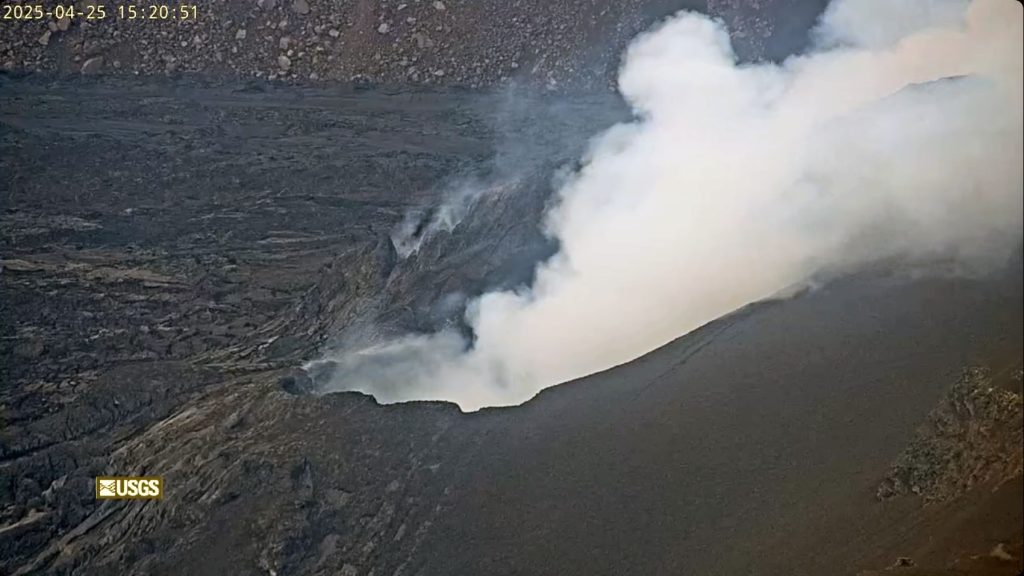HILO, HI – The Hawaiʻi Department of Health (DOH) is cautioning residents and visitors across the islands to be aware of potential health hazards related to vog, or volcanic smog, following the recent pause in Kīlauea’s eruption. While the eruption at the summit ended on April 22, 2025, elevated volcanic gas emissions continue to impact air quality.
Vog, a hazy air pollution caused by volcanic emissions, can travel far downwind from the Kīlauea summit, posing a risk to human health. Alongside poor air quality, possible hazards include windblown volcanic glass (Pele’s hair) and volcanic rock fragments, and ash.
Since the eruption began in late December 2024, air quality levels at monitoring stations on Hawaiʻi Island, Maui, and Oʻahu have fluctuated, experiencing periodic spikes in both sulfur dioxide (SO₂) and fine particulate matter (PM2.5). Although most readings indicate good or moderate air quality, stations in southern Hawaiʻi Island have, at times, reported unhealthy levels.
The DOH advises everyone to stay informed about current air quality conditions, as they can change rapidly based on volcanic emissions, wind direction, and other weather patterns. Southerly winds can carry vog northward through the island chain, increasing concentrations in West Hawaiʻi and other areas.
Exposure to elevated levels of SO₂ and PM2.5 can cause various health effects, ranging from minor irritation of the eyes, nose, throat, and skin to more serious issues like coughing, phlegm production, increased susceptibility to respiratory ailments, fatigue, dizziness, and difficulty breathing.
The following individuals are at greater risk:
- Those with pre-existing respiratory conditions (asthma, bronchitis, emphysema, chronic lung or heart disease)
- Children and infants
- Elderly individuals
- People who work or exercise outdoors
- Pregnant women
The DOH recommends these precautionary measures:
- Consult a medical provider if you develop symptoms, as respiratory conditions can worsen quickly in vog.
- Keep medications like inhalers readily available.
- Reduce strenuous outdoor activities and limit time spent outdoors.
- Stay indoors with windows and doors closed, and recirculate indoor air with air conditioners.
- Avoid smoking and secondhand smoke.
- Drink plenty of fluids.
- Consider using air purifiers designed to reduce PM2.5 and SO₂.
- Consider leaving areas with poor air quality.
- Prepare a family emergency plan.
- Heed warnings from county and state emergency management officials.
The DOH does not recommend that the general public use respirators to protect against volcanic gases. Surgical, cloth, KF94, KN95, or N95 masks can provide some protection against volcanic ash, but not against gases like SO₂. These masks may not properly fit children or individuals with facial hair, and can worsen respiratory disorders.
For the most recent vog and air quality updates, visit the Hawaiʻi Interagency Vog Information Dashboard and the DOH Clean Air Branch website.

